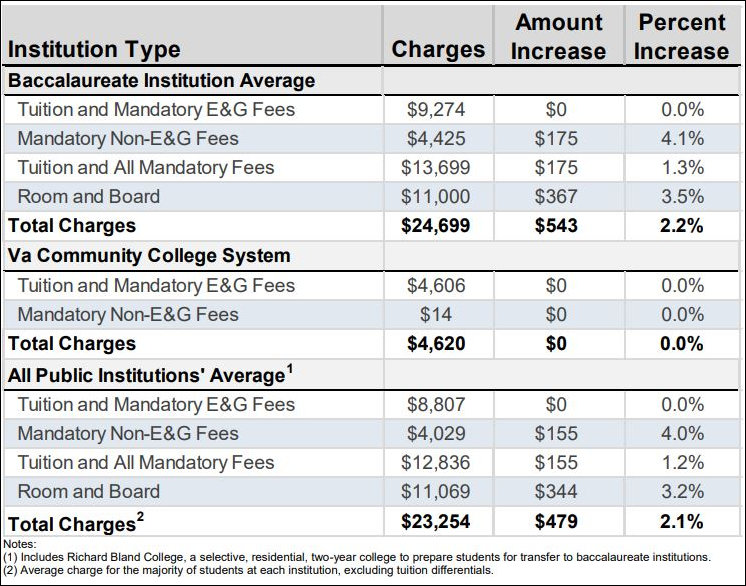
Thanks to an increase in state support, Virginia’s four-year colleges and universities held tuition mandatory E&G (education and general) fees stable this year for in-state undergraduates. However, according to the latest Tuition & Fees report from the State Council of Higher Education for Virginia, the total cost of attendance including room, board, and fees for auxiliary services will increase 2.2% for the 2019-2020 academic year.
Drivers of the cost increases are a 3.5% increase in the cost of room & board, accounting for about 44% of the total cost of attendance, and a 4.1% increase in mandatory non-E&G fees. It’s hard to see how those increases are justified, given the fact that the Consumer Price Index has increased only 1.6% over the past 12 months.
Did Virginia’s college administrators shift costs — perhaps in the form of administrative charges and overhead — to those line items so they can say they held the line on tuition and mandatory fees? Perhaps SCHEV could look into that question.

Leave a Reply
You must be logged in to post a comment.